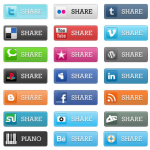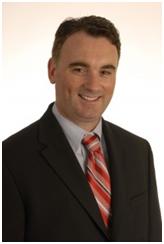Effective Executive: David Baeza, CMO of Apperian
We are delighted to share another interview in our “Effective Executives” series. This week’s interview is with David Baeza, Chief Marketing Officer at Apperian. David is well known as the founder of several private and one public tech company. He’s the former VP of Global Demand Gen for Citrix Online, makers of GoToMeeting and GoToMyPC. He regularly blogs about marketing and social media, contributing blogger at workshifting.com, producer of online mobility conferences, and speaks on the topic of media and brand positioning. He is also the Advisor to TreeHouse and TwitterKids.
You have a very dynamic background including roles as CEO, VP, Advisor and CMO. Which role fits you best and why?
What most people don’t know is that while I was CEO of a public company, I was also officially the CMO. I have never been able to let go of marketing, so to be perfectly honest with myself, the role that fits me best is CMO. I love all aspects of marketing, but disruptive positioning, design and content creation are closest to my heart. The real role of the CMO is that of a story teller. We tell stories through content. We make promises of what could be. However, CMOs are only as good as the products and services they market. The price of entry is an amazing product. Great CMOs don’t get behind products they don’t deeply believe in. If they do, it is all but guaranteed your marketing is going to fail.
When did you spark an interest in working in the technology field?
It was less of an interest, and more of an accident. After grad school I landed at a small financial consulting firm in L.A. Our clients were in the telecom business. I joined one of our clients to manage sales. That client was a technology provider to the large telephone carriers. I never looked back. Fast forward to 1998 and I launched the first national ISP to compete with AOL. Damn that was fun! During that time, I launched a television campaign called saygoodbyetoaol.com. We figured out that people would switch from AOL if they could keep their AIM account. So that’s exactly what we advertised. Yes, we got sued. A lot. In the end, it really worked. Since then, I’ve launched a few tech companies, and had the opportunity to work at some amazing tech brands. I am certain that there is no other industry that is as sexy as technology. My job is to make it even sexier.
What do you love about your role as CMO?
It’s the only profession that you’re paid to break all the rules. At best, “best practices” in marketing are directional. For example, I was reading a survey from Sirius Decisions about marketing to the CIO. Last on the list as an effective tactic was newsletters. I thought, Wow! What an amazing opportunity to reinvent the newsletter. What if I simply blew up the standard, boring newsletter template and created an amazing digital experience ? Think Flipboard for the CIO. A completely immersive piece of content. I get excited just thinking about it! That’s the reason I love what I do.
You are a lead organizer for Twestival, benefiting Charity:Water and Concern Worldwide. Can you tell us a little bit about your role and about the event?
Twestival is a global event that takes place on a single day to benefit one charitable organization. It uses crowd sourcing and volunteers to organize in person meetups for the benefit of the charity. The founder of Twestival, Amanda Rose, has taken that formula and teamed up with Jamie Oliver to produce FoodRevolutionDay.com to educate and highlight the world’s food issues. My role at Twestival was that of a sponsor and fund raiser. I managed the Santa Barbara Twestival, both online and meetup. I think that any company of any size should always strive to have charity as part of their DNA, even if the company is not profitable. By starting early, even if it’s just donating your company’s time and resources, it builds a foundation of character and giving. That ultimately results in a broader perspective of the world. Recently, we created a living art project in Spain at Mobile World Congress for the benefit of Global Hope International Network. The impact far exceeded our expectations. An artist from Misfit flew to Spain and created a living art project – which means that she painted live during the exhibit and finished the project on the last day. People came up and were given the opportunity to paint different portions of the art. Each time someone painted, Apperian donated $50 to Global Hope. In the process, we created an amazing exhibition, had insane engagement from attendees, and raised a lot of money.
Besides technology and branding, what else are you passionate about?
Family. I know that sounds boring but I’m deeply committed and believe in family first. I’m married, and I have two little girls, 6 and 8 years old, and they are my life. I instill family first in my team. I don’t value them based on butt-in-seat time. I care about their results and I insist that they have a well rounded life. I am not impressed by people that work 10 -12 hours per day. In fact, I have the opposite reaction. I tend to think, “What’s wrong?” Are they inefficient? We have amazing tools that allow us to workshift from anywhere in the world. There is simply no excuse for not having a balanced life. Don’t get me wrong, it’s 10pm as I’m writing this from Boston, and I live in California. I do what needs to be done, but I have boundaries. My family needs my time more then they need the money I earn. I don’t let anything stand in the way of them.
How do you define “innovation”?
If a company ever declares innovation is a strategic imperative, it’s the beginning of the end. Innovation is a cultural paradigm. It starts with an intense desire to explore, challenge and break things. Yes, break things. It can’t be contained to a budget item on a spreadsheet. Innovators come in all sizes and shapes. It comes from all aspects of company, not just engineering. It comes from customer service, interns, lawyers, accountants…it’s everywhere. Great companies seek it out and wrap their arms around it. They encourage idea generation, transparency, and failure. If companies let their people fail, without fear of consequence, the speed of innovation is absolutely staggering.
What is next for you in 2012?
Since 2012 is almost halfway over, it’s about execution. We have some great products that we are about to ship. It’s about narrowing the scope of opportunity and focusing on those things that have the greatest impact. I’m also trying to figure out new extensions of content. By that I mean things like Pinterest and Instagram. I’m also thinking about new formats for video, online seminars, and more. On a personal level, I’m going to be speaking at more conferences about marketing. I love to speak, but I hate to travel. That’s like saying I love to eat, but I hate food. The two things go hand in hand. I have a personal blog I’ve been threatening to launch for a year, so I intend to get that out as well. I also love wine. I was dabbling with a wine blog but I put it on the shelf because it took too much time away from my family. I’m planning to travel to Europe in July to do some serious brand disruption and to attend my first Shakespeare play. It sounds crazy, but I think Shakespeare is going to have a significant impact on my marketing in 2013. I feel inspired by his work, and that always leads to great ideas.











 There may be some debate over whether or not
There may be some debate over whether or not